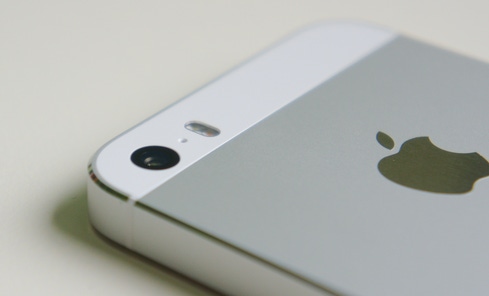Apple Preps Larger iPhone
Apple's order of up to 80 million devices suggests consumers want a larger iPhone, but will it hurt iPad sales?


iPhone 6: 8 Ideas Ripped From Rivals?
iPhone 6: 8 Ideas Ripped From Rivals? (Click image for larger view and slideshow.)
Apple has ordered as many as 80 million 4.7- and 5.5-inch iPhones for a planned September launch. The larger iPhones are Apple's late response to changes in the market as demand for large-screened smartphones has surged in the last year. Some skeptics, however, think Apple could step into a catastrophe of "mini" proportions.
Apple, which has in recent years released new iPhones in September, has asked its suppliers to gear up for the iPhone 6 debut, which will come just ahead of the fourth quarter. The company is looking for between 70 million and 80 million devices combined, according to sources cited by The Wall Street Journal. The orders are significantly larger than the ones Apple placed last year for the iPhone 5s/5c, which totaled between 50 million and 60 million.
The Journal's sources suggest Apple is concerned about manufacturing yields for the larger screens, and it has ordered as many as 120 million touch screen panels. The iPhone 6 is expected to use the same in-cell technology found in the iPhone 5/5s/5c, which combines the touch sensor with the LCD itself to create a thinner overall component. Apple may also switch to sapphire instead of glass, which further complicates the manufacturing process. Sapphire is more difficult to work with but is more resistant to breakage.
[Researcher discovers security lapse in iOS. Read Hidden iOS Services Bypass Security.]
Apple has long kept the iPhone small: The first five iPhones' screens measured 3.5 inches. Apple bumped the display up to 4 inches for the iPhone 5 and later models. When asked about making larger iPhones the late Steve Jobs said, "You can’t get your hand around it. No one’s going to buy that." On that matter, Jobs was wrong. During the last few years, demand for large screens has increased rapidly. Shipments of smartphones with screens 5 inches or larger shot up 369% during the first quarter of 2014 compared to the year-ago period.
Apple CEO Tim Cook has gone on the record several times to suggest that Apple won't release a device that compromises usability, and devices with screens larger than 5 inches are often cumbersome to use with just one hand. Cumbersome or not, Apple needs a larger iPhone to compete with HTC, Samsung, LG, and other competitors.
Even as consumers clamor for a larger iPhone, it may cause Apple trouble. Neil Mawston, an analyst with Strategy Analytics, worries the larger iPhones will hurt iPad Mini sales. "The larger iPhones may accelerate a fresh push toward larger-screen tablets," said Mawston. "The tablet category will need to innovate to differentiate from increasingly outsize smartphones."
Several research firms have also concluded in recent months that sales of large-screened phones are indeed impacting sales of small-screened tablets. The iPad Mini's screen measures 7.9 inches. An iPhone with a 5.5-inch display may steal interest from the iPad Mini, which has been a strong seller for Apple since its 2012 debut.
Apple declined to comment on the Journal's report but is due to discuss its quarterly earnings Tuesday. The company may drop a few hints about its plans for September.
In its ninth year, Interop New York (Sept. 29 to Oct. 3) is the premier event for the Northeast IT market. Strongly represented vertical industries include financial services, government, and education. Join more than 5,000 attendees to learn about IT leadership, cloud, collaboration, infrastructure, mobility, risk management and security, and SDN, as well as explore 125 exhibitors' offerings. Register with Discount Code MPIWK to save $200 off Total Access & Conference Passes.
About the Author
You May Also Like






